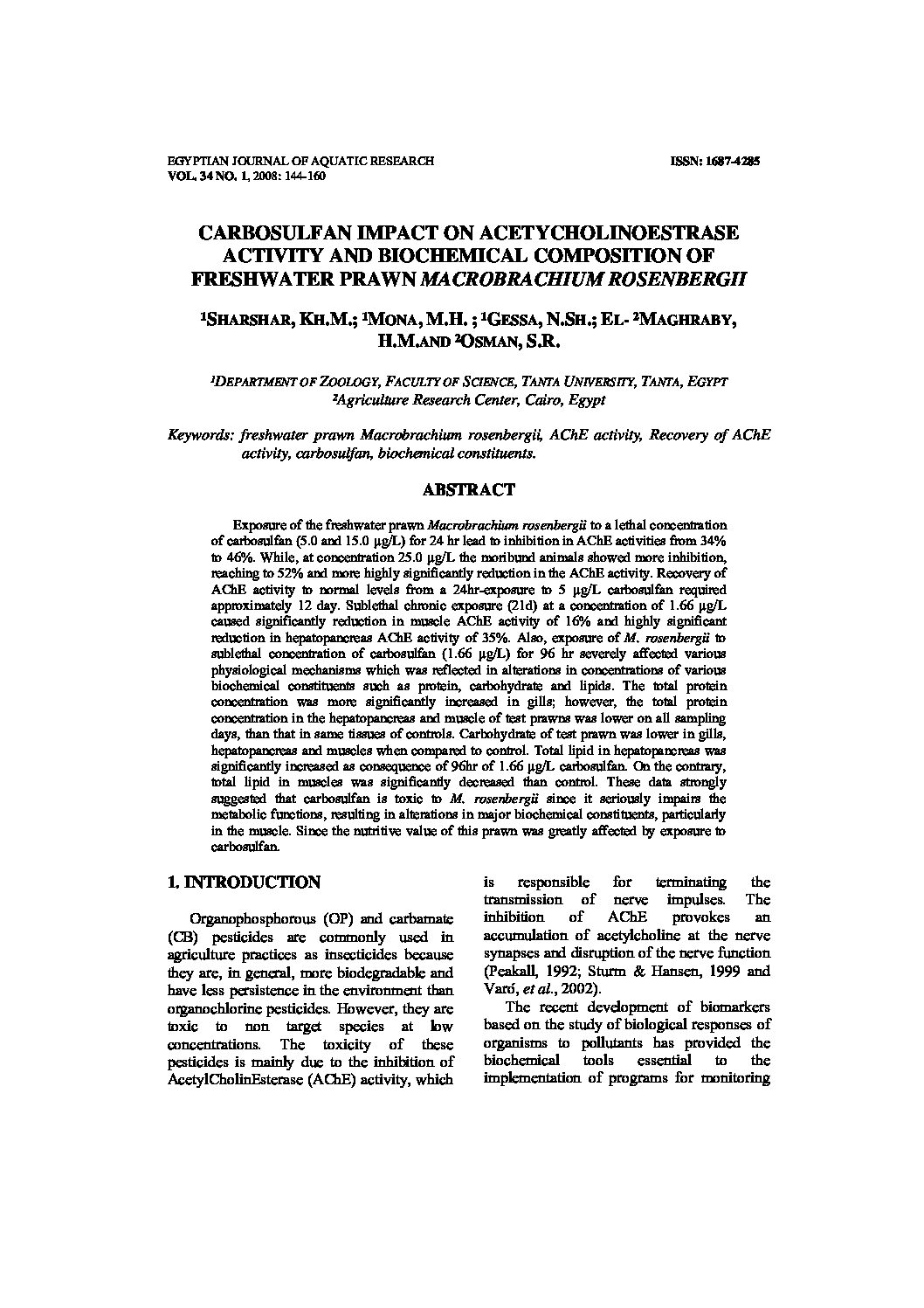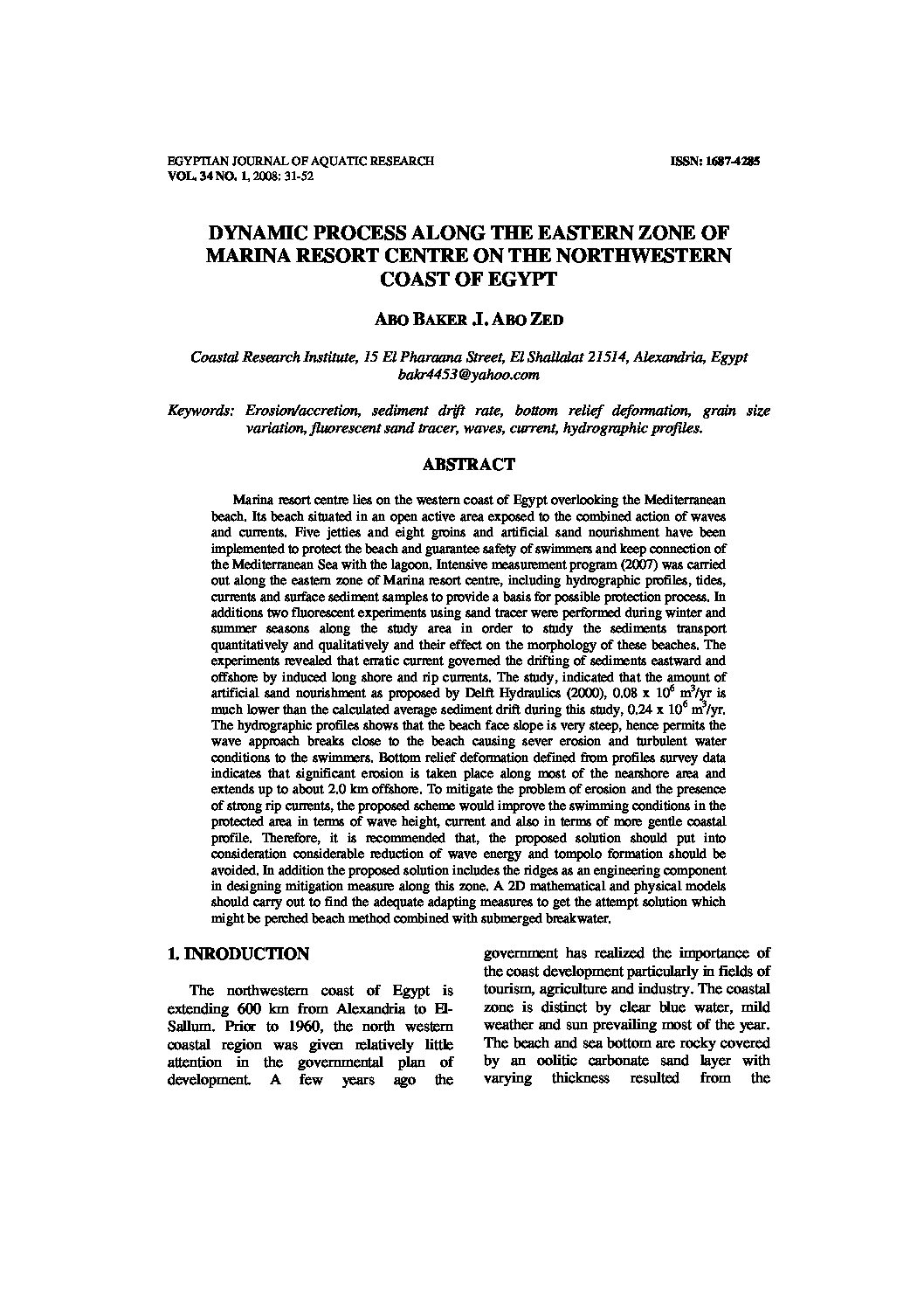Categories
vol-34ECOLOGICAL INDICES AS A TOOL FOR ASSESSMENT
EUTROPHICATION PROBLEMS IN ALEXANDRIA’S
COASTAL WATER, EGYPT
NABILA RAGAB HUSSEIN
National Institute of Oceanography and Fisheries
[email protected]
Keywords: Coastal water, Phytoplankton, Nutrient salts, Diversity index, Chlorophyll a.
ABSTRACT
Phytoplankton community and environmental conditions of Alexandria coastal waters
from Kayet-Bay to Abu-Qir Bay were studied monthly from July 2002 to June 2003 after
the construction of the new coastal road and termination of the Project of Alexandria
wastewater (phase II). Salinity fluctuated between 33.82 PSU and 39.3 PSU, temperature
between 16.9°C and 33.6°C, oxidizable organic matter (OOM) between 0.43mgO2/L and
6.47mgO2/l, dissolved oxygen (DO) between 0.71 and 7.03 mlO2/L. The lowest and highest
nutrient concentrations were 0.07 and 25.4 µg at/L for nitrate ( 1
3 NO− ); 0.07 and 1.92 µg
at/L for nitrite ( 1
2 NO− ); 0.13 and 25.33 µg at/L for ammonia ( 1
4 NH+ ); phosphate ( 3
4 PO− )
between complete depletion and 2.98 µg at/L and silicate ( 2
4 SiO− ) between 0.66 and 33.77
µg at/L. All these factors create irregular pattern of phytoplankton growth (500-
12.4×106
unit/L) and serve as a good indicator of eutrophication level throughout the period
of study. Phytoplankton species including wide spectrum from fresh-brackish (27 spp.) to
marine water forms (65 spp.). Bacillariophyceae ranked the main group (98.60 % to the
total community). It was mainly represented by Skeletonema costatum (74.73% to the total
community), while the genera Chaetoceros, Nitzschia and Rhizosolenia (5.91%, 5.68% and
4.32% respectively), were considered frequent forms. Dinophyceae, Cyanobacteria,
Chlorophyceae and Cryptophyceae were rare or scarce. Abu-Qir, Montazah and Sidi-Bishr
harboured the highest phytoplankton density, while lowest density occurred at Sporting and
Kayet-Bay stations. The highest counts were recorded in March and lowest in November.
Species diversity ranged between 0.08-3.02 (nats), and Chlorophyll-a content fluctuated
between 0.005-3.68µg/L. Trophic State Index (TSI) showed that, Miami and Gleem are
considered as mesotrophic area; Abu-Qir, Montazaha, Mandara, Ber Massoud, Sidi Bishr,
Sporting, Eastern Harbour and Kayet-Bay are considered as eutrophic area. While ElShatby was hypertrophic area. Monthly variations showed that, the area was mesotrophic,
except in winter when it was hypertrophic. Correlation and stepwise regression between
phytoplankton and some physico-chemical parameters confirmed the dependence of
phytoplankton growth on salinity, temperature and oxidizable organic matter.







